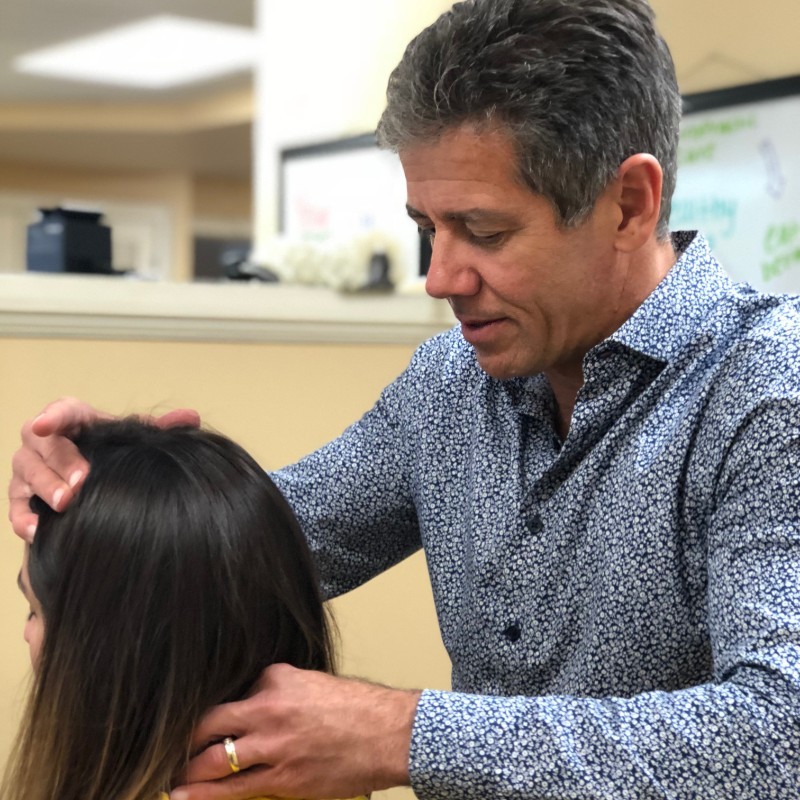Back Pain, When will it happen to you?
Roughly 80% of all Americans will suffer an episode of back pain at some point in their lives. The problem we have is that many causes of severe back pain are preventable if they are identified in time. Most adults are trained to believe that if they feel good and never had back pain, they are healthy and have nothing to worry about. However, problems can be developing over time and brewing for years, like a volcano waiting to explode, until a simple movement drops them to the ground in excruciating pain.
Let me provide you with a simple review of spinal anatomy. Your spine is formed of 24 movable individual vertebrae: 7 cervical, 12thoracic, and 5 lumbar. They are stacked above your pelvis which consists of two outside ilium bones and your sacrum in the middle. Your vertebrae are separated by shock absorber like discs which allows for movement. Together, this vertebral column provides a cage which protects your spinal cord and allows openings for your spinal nerves to reach out and transmit vital communication between your brain and your body. Ligaments hold the spine together and tendons attach your muscle to the spine and provide the movement necessary for daily activity. This is truly an incredible display of engineering when it works properly.
Obviously, most of us can understand how physical injuries, such as accidents, falls, sports, and lifting, can sprain the ligaments and strain the muscle and tendons leading to acute bouts of back pain. However, I would like to focus on the cumulative effect leading to spinal degeneration and intervertebral disc disease. For those of you who have heard the term “herniated disc”, this refers to damage of the disc in between the vertebrae where the center, jell like material is forced through torn outer annular fibers of the disc, possibly compressing nerves in the area. If this occurs in the lower lumbar spine, it could lead to pain radiating into the lower extremities. If it occurs in the neck, it could lead to radiating pain in the upper back and or upper extremities. Severe cases could lead to weakness or loss of muscular function and even affect organs and glands associated with those nerves. What you must understand is that a healthy disc can usually withstand more compressive force than your actual vertebra. It is not uncommon to see people who fall on their back, suffer a compression fracture to the spine and not a herniated disc. So every time I have a patient come into my office with a herniated disc, I wonder what led to weakness in that disc and allow it to herniate before the bone would fracture. Too many times, these individuals are searching for pain management from the herniation, which are usually short term benefits but can allow the damaged disc to continue to worsen and eventually require potentially dangerous surgical intervention.
A disc does not have veins and arteries supplying its nutrients. It works more like a sponge; when we squeeze it, it releases fluids, and when we stretch it, it absorbs fluids. Therefore, the movement between two vertebrae causes this transfer of fluids and nutrients which is vital to the heath of a disc. Chronic injury, repetitive stresses, scar tissue, and misalignments of vertebrae can affect this circulation, and gradually, over a period of years, desiccate or dry out the disc, making it less flexible, weaker, and more vulnerable to tears and herniation. Once the cause is identified and corrected, healing of the herniation can be facilitated through the use of spinal decompression.
Spinal decompression is a computerized, logarithmic traction which increases and decreases based on preprogrammed patterns in order to avoid muscle guarding and tightness sometimes associated with static traction alone. This decompression creates a negative pressure in the disc, allowing the protruded or herniated portion to be pulled back within the normal confines of the disc. The pumping action of the procedure helps improve circulation to the damaged disc and facilitate the healing process. This treatment is then followed up with core strengthening and flexibility exercises to help prevent future injuries.
In summary, back pain can be debilitating and can occur with no prior warning. Back pain should always be evaluated properly as it may also be associated with referred pain from organs and glands such as kidneys, intestines, ovaries, uterus and prostate. It may also be related to infection and even tumors. However, I believe the best treatment for back pain is prevention. By identifying and correcting underlying problems, we can slow or stop conditions which can lead to degenerative changes later in life. If you or someone you know has neck pain, back pain, radiating pain to their arms or their legs, or has been diagnosed with a bulging or herniated disc, and you would like more information to see if non-surgical spinal decompression is right for you, please do not hesitate to contact my office at 305-270-8800.
Dr. Roberto Fernandez has been a chiropractic physician in the Kendall area for over 20 years. For more information; go to www.miamifloridachiropractor.com or call 305-270-8800.

Roberto Fernandez has been a Doctor of Chiropractic Medicine since 1994. He helps people of all ages have healthy and vibrant bodies with drug-free, surgery-free treatments.
0 Comments